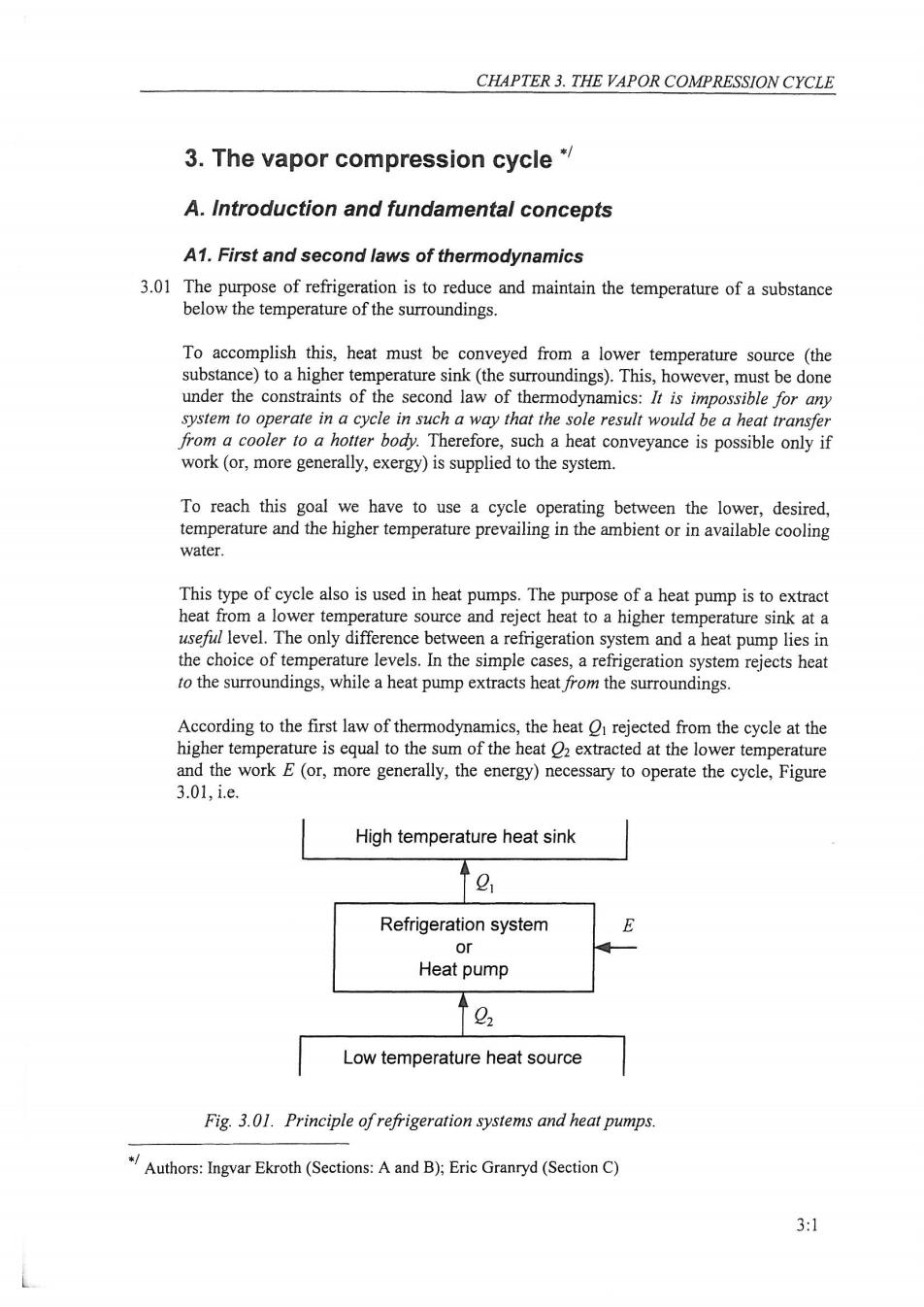正在加载图片...

CHAPTER 3.THE VAPOR COMPRESSION CYCLE 3.The vapor compression cycle* A.Introduction and fundamental concepts A1.First and second laws of thermodynamics 3.01 The purpose of refrigeration is to reduce and maintain the temperature of a substance below the temperature of the surroundings. To accomplish this,heat must be conveyed from a lower temperature source (the substance)to a higher temperature sink(the surroundings).This,however,must be done under the constraints of the second law of thermodynamics:It is impossible for any system to operate in a cycle in such a way that the sole result would be a heat transfer from a cooler to a hotter body.Therefore,such a heat conveyance is possible only if work (or,more generally,exergy)is supplied to the system. To reach this goal we have to use a cycle operating between the lower,desired, temperature and the higher temperature prevailing in the ambient or in available cooling water. This type of cycle also is used in heat pumps.The purpose of a heat pump is to extract heat from a lower temperature source and reject heat to a higher temperature sink at a useful level.The only difference between a refrigeration system and a heat pump lies in the choice of temperature levels.In the simple cases,a refrigeration system rejects heat to the surroundings,while a heat pump extracts heat from the surroundings. According to the first law of thermodynamics,the heat O rejected from the cycle at the higher temperature is equal to the sum of the heat 2 extracted at the lower temperature and the work E(or,more generally,the energy)necessary to operate the cycle,Figure 3.01,i.e. High temperature heat sink g Refrigeration system E or Heat pump 0 Low temperature heat source Fig.3.01.Principle of refrigeration systems and heat pumps. Authors:Ingvar Ekroth(Sections:Aand B):Eric Granryd (Section C) 3:1